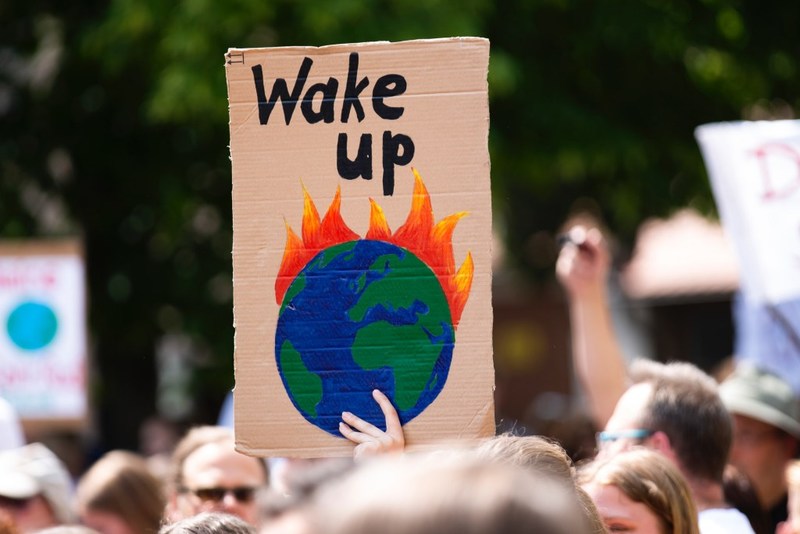
Currently, many individuals and families are forced to stay at home, practicing self-isolation to help contain the spread of the novel Covid-19. Basically, our home becomes our new office and playground, shifting a bunch of activities inside and increasing productivity in our house.
One might have recognised the significant fall of pollution on a global scale, giving fresher air and clearer sky most days since the major activities that release a tremendous amount of carbon to the atmosphere, including the usage of energy in factories, offices, airports and on the streets are reduced tremendously.
In early April, United Nations, the head of the UN Environment Programme (UNEP) Inger Andersen said on the release that Covid-19 is by no means a “silver lining for the environment”. Andersen calls instead for a profound, systemic shift to a more sustainable economy that works for both people and the planet.

People have to remember that everyone is ‘forced’ to stay at home, meaning that the dire situation makes us, human, to reduce mobility and normal activities. Many people want things back to normal but if the normal days are very wasteful, why does anyone want to go back to the old times? If the Covid-19 is the right time to reevaluate our pattern and model in running the economy, the change must be done organically with full awareness and consciousness among global communities.
Our home is a place where we can create that change to move toward a more sustainable living. Housing is the fourth contributor to the global carbon footprint, according to the World Bank. The Green Building Council Indonesia also noted that significant growth in residential property in the big city like Jakarta could increase the level of global emissions in the future if the households don’t practice green architecture or to become more energy efficient.
For those who aren’t familiar, carbon footprint is the total amount of greenhouse gases (including carbon dioxide and methane) that are generated by human actions. A household’s carbon footprint generally increases with its income, ranging from 19.3 to 91.5 tonnes of CO2-equivalent annually. The average carbon footprint of the wealthiest households is over five times that of the poorest, according to The Nature Conservancy.

To have the best chance of avoiding a 2℃ rise in global temperatures, the average global carbon footprint per year needs to drop under 2 tonnes by 2050. Lowering individual carbon footprints from 16 tonnes to 2 tonnes doesn’t happen overnight! By making small changes to our actions, like eating less meat, taking less connecting flights and line drying our clothes, we can start making a big difference.
The United Nations Framework Convention on Climate Change (UNFCCC) establishes six types of greenhouse gases produced by human actions: Carbon dioxide (CO2), Methane (CH4), Nitrous Oxide (N2O), Hydrofluorocarbons (HFCs), Perfluorocarbons (PFCs) and Sulfur hexafluoride (N2O), Hydrofluorocarbons (HFCs), Perfluorocarbons (PFCs) and Sulfur hexafluoride (SF6). Those greenhouse gases are also produced as an outcome of our activities in the household, including electricity, fuel oil, LPG, waste and water.

Could anyone imagine that those gases are released more to the sky since humans have been staying at home, consuming electricity, LPG and other energy needs for almost 24 hours? If our house is not able to practice energy conservation, our behaviour to wisely use those energies are needed right now. Are you keeping the electricity in the house for 24 hours or maybe shift it to LED lights? Do you throw your leftover food to the garbage? How do we practice our diet? Are you still going to waste so much water if one only needs to take a shower once a day? How should we exercise if we tend to use a treadmill? And how do we treat our clothes if it’s the second global polluter after oil? If the pandemic is over, do you still want to drive everyday and travel connecting flights?
These questions will give individuals a mindset to start thinking about their personal carbon footprint. We have no right to complain about pollution and the high-temperature environment if we know that we are, actually, also significant polluter to the planet.
Carbon calculator
Our goals are to achieve a carbon offset. A carbon offset is a reduction in emissions of carbon dioxide or other greenhouse gases made in order to compensate for emissions made elsewhere. Our house can be carbon offset by maintaining low carbon production in many essential sectors such as public transportation and passenger airlines. Building wind sourced electricity plants, shifting to solar energy, and maintaining green canopy (forest) is the offset to conventional fossil fuel energy and land use.
If our house can practice energy conservation, zero waste and become an urban canopy, residential and housing is individual-driven action that could add more or reduce significantly carbon emission to the atmosphere. That’s why the mindset must be changed for everyone on the planet. If the global emission reaches the threshold, it’s a lot harder to recover the planet from degradation. The threat is no other than the human race.

One can calculate our carbon by manually counting monthly energy use on the bill and use the calculator from carbonfootprint.com or nature.org that basically measures our total carbon from accumulated elements including electricity, heating oil, LPG gas, fuel, water, waste, land of living place and natural gas. Anyone could ask for assistance to improve their home with an architect or agencies like Green Building Council to make our home greener than ever.
In the logic of the carbon offset concept, we have to keep in mind that anyone who practices sustainability and green living is compensation to those who still live in a wasteful lifestyle. Wealthy families have more responsibility to make their home more energy-efficient as analysis shows that a bigger house and a bigger number of family members tend to cause a bigger carbon footprint.
If there is no tomorrow, the time is now!






